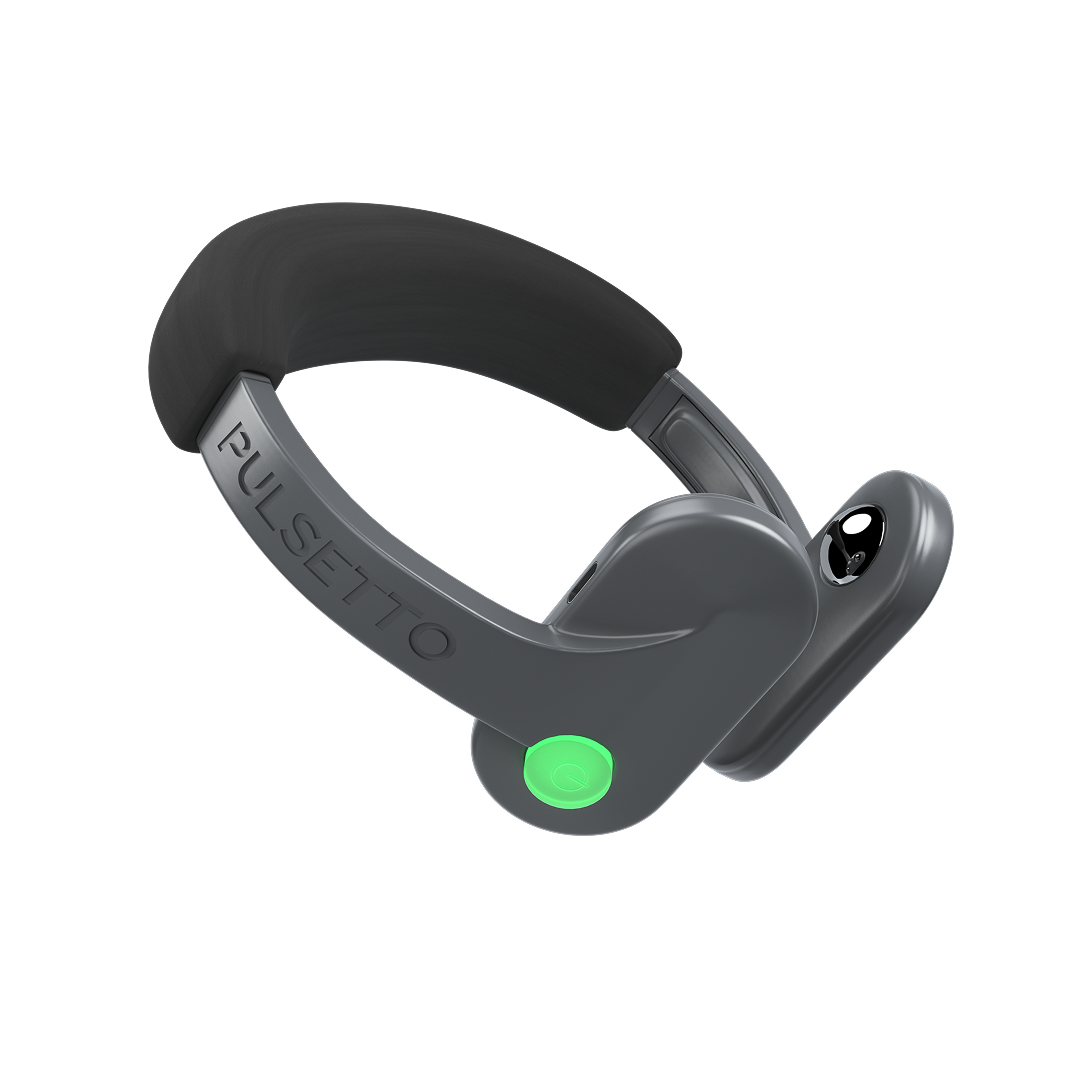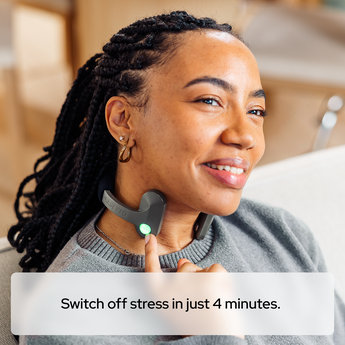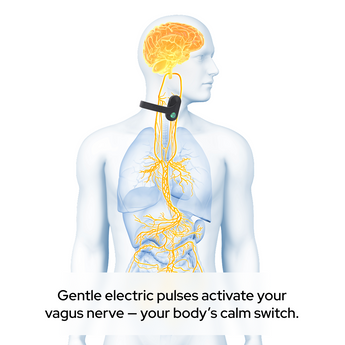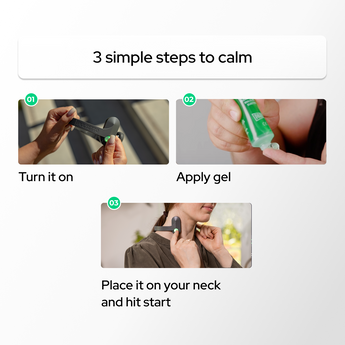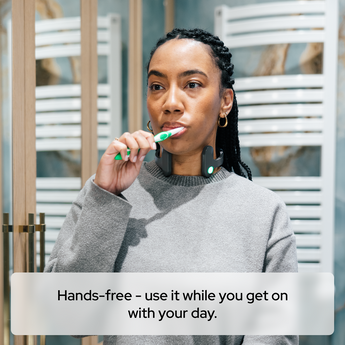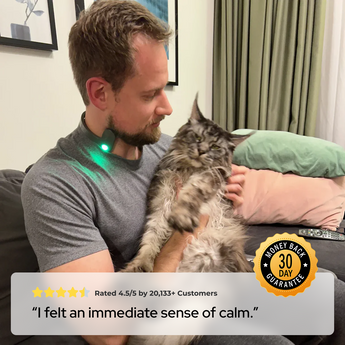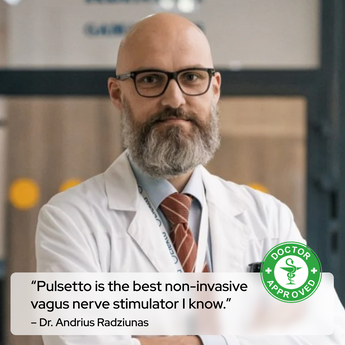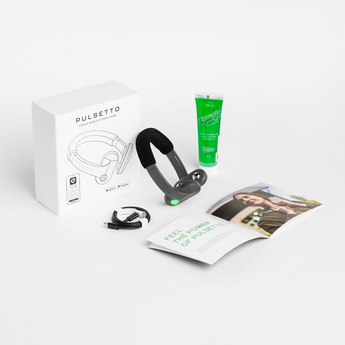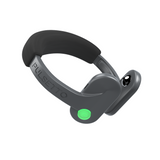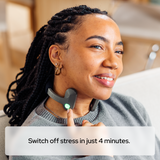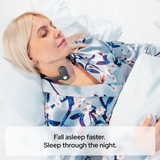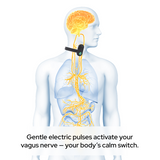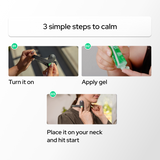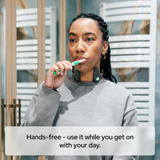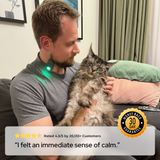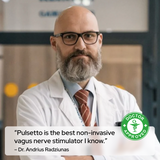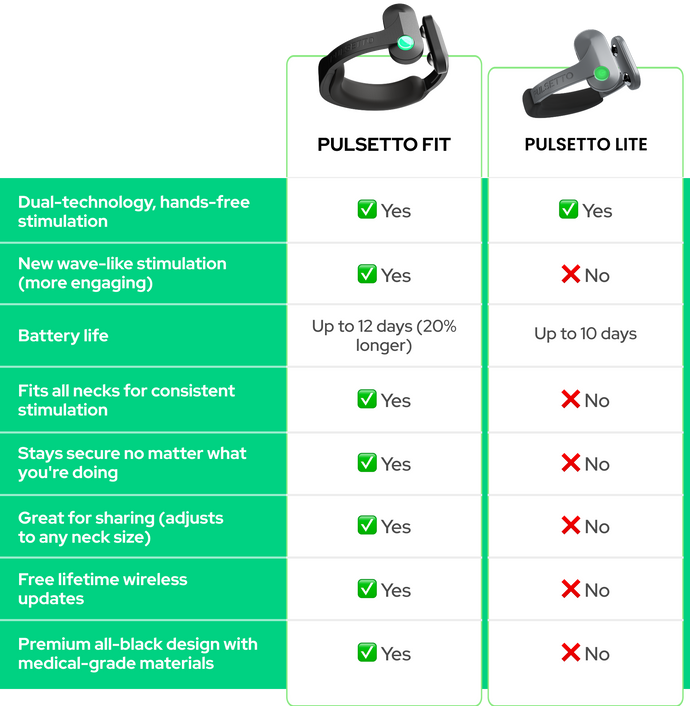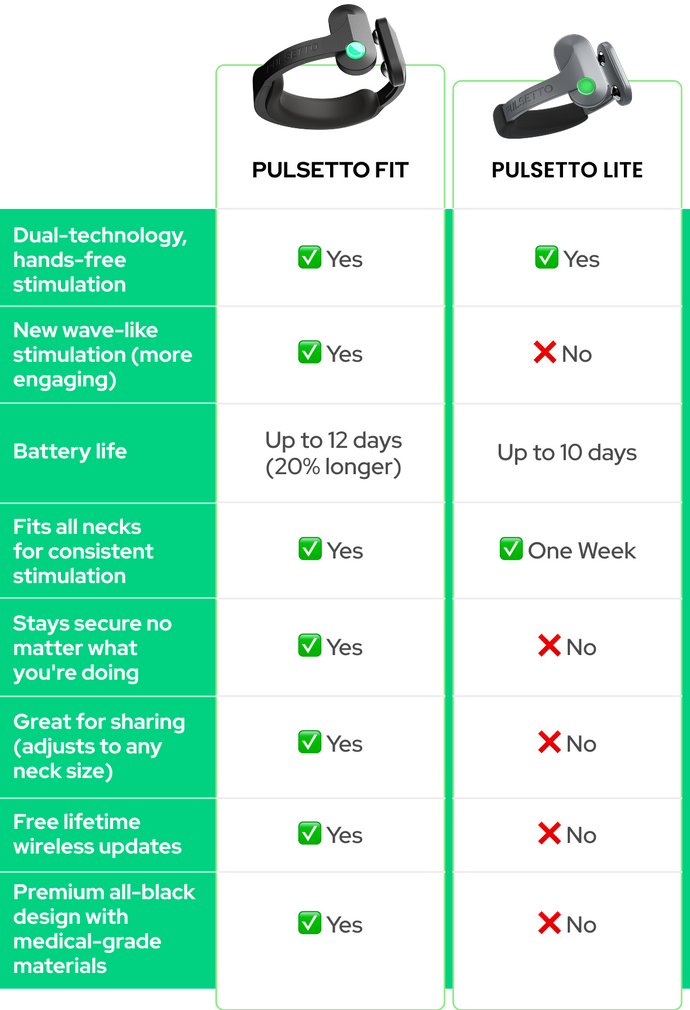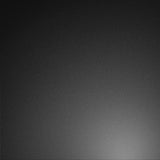Types of Vagus Nerve Massage
There are various techniques for stimulating the vagus nerve, each targeting different areas of the body. Here are some of the most effective methods:
-
Ear Massage: Also known as auricular massage, gently massaging the area around your ears can stimulate the vagus nerve and promote relaxation.
-
Neck-Shoulder Massage: Focusing on the neck and shoulder area can help release tension, especially in individuals prone to stress-related muscle tightness.
-
Abdominal Massage: Massaging the abdominal area in circular motions can aid digestion and promote vagal tone, which is crucial for overall gut health - you’ll benefit from improved digestion and reduced inflammation in the gastrointestinal tract.
-
Foot Massage: Reflexology techniques on the feet can indirectly stimulate the vagus nerve.
-
Head and Face Massage: Gentle massaging or tapping of the face, particularly around the jawline and temples, can help stimulate the vagus nerve. This can be especially useful for those looking to reduce tension in the facial muscles or relieve headaches.
Each of these techniques can be easily performed at home.
Vagus Nerve Stimulation Types
Vagus nerve stimulation can be categorized into two main types: active and passive. Each type has distinct applications and benefits.
Active Stimulation
-
Massage: The age-old practice of massage, featuring gentle strokes and pressure applied to specific areas like the neck, ears, and abdomen, can effectively activate the vagus nerve to promote relaxation and relieve stress.
-
Tapping: Tapping or acupressure on vagal points is a simple yet powerful way to awaken the vagus nerve. This practice can be performed almost anywhere - it’s a quick stress relief option that gives a sense of calmness.
-
Acupuncture: With its roots in ancient healing traditions, acupuncture can help with VNS by inserting thin needles into specific acupoints that are anatomically close to the vagus nerve.

Acupuncture is a traditional Chinese medical practice that involves the insertion of fine needles into specific points on the body to alleviate pain and promote healing, and it is believed to have originated in China around 100 BC.
-
Electrical Stimulation: Innovative devices like Pulsetto use mild electrical impulses to stimulate the vagus nerve. This method is ideal for individuals seeking non-invasive ways to enhance vagal tone, ultimately promoting relaxation and emotional well-being.
-
Cold-Water Immersion: Brief exposure to cold water, such as cold showers or cold water face immersion, can activate the vagus nerve. Cold water’s natural ability to trigger the body’s stress response serves as a catalyst to stimulate the vagus nerve.
Passive Stimulation
-
Music: The soothing power of music therapy, especially calming and meditative tunes, indirectly stimulates the vagus nerve to improve mood.
-
Meditation: Mindfulness meditation and deep breathing exercises are ancient practices that actively engage the vagus nerve. These techniques encourage a relaxation response, and regular meditation has been linked to enhanced vagal tone.
Ideal Vagus Nerve Stimulations for Health Outcomes
The effectiveness of VNS methods can vary depending on individual goals and desired health outcomes.
-
Anxiety: Consider tapping for targeting acupressure points, massage to alleviate muscle tension, and acupuncture to promote relaxation and energy balance.
-
Epilepsy Management: acupuncture and electrical stimulation through devices like Pulsetto can modulate neural activity, reducing the frequency and severity of seizures.
-
Gut Health & Digestion: Abdominal massage stimulates the vagus nerve for enhanced digestion, while foot massage and reflexology indirectly support healthy digestion.
-
Emotional Wellbeing: Calming music or sound therapy can reduce stress and improve mood. Meditation enhances emotional well-being by regulating emotions and increasing resilience to stress.
How to Massage the Vagus Nerve
Here are step-by-step instructions on how to massage different areas of the body to activate the vagus nerve:
Ear
- Gently rub the outer ear, starting from the top and moving downwards.
- Use circular motions with your thumb and forefinger to massage the earlobe.
- Be gentle and maintain a slow, rhythmic pace to stimulate the vagus nerve through the auricular branch.
Neck
- Begin by applying gentle pressure to the sides of your neck with your fingertips.
- Gradually move your fingers in a downward motion, from the base of your skull to the collarbone.
- Ensure you maintain a gentle and soothing touch to activate the vagus nerve in the neck area.
Stomach
- Lie down in a comfortable position and take deep breaths to relax.
- Place your hands on your abdomen, right above your navel.
- Use a clockwise, circular motion to gently massage your stomach.
- This can help stimulate the vagus nerve by activating the digestive system.
Feet
- Sit in a relaxed position with your feet elevated.
- Use your thumbs to apply gentle pressure to the soles of your feet.
- Start from the heel and work your way towards the ball of the foot.
- Focus on stimulating the nerve endings in your feet, which can indirectly influence the vagus nerve.
Head and Face
- Begin by gently massaging your temples with your fingertips using small, circular motions.
- Move your fingers down to your jawline, massaging your jaw in a circular motion.
- Continue by gently stroking your face from the center outward, focusing on the cheeks and forehead.
- Pay special attention to the area around your eyes and eyebrows.
How Pulsetto Helps with Vagus Nerve Stimulation
Pulsetto Fit: Wellness, Upgraded

Description (Pulsetto Fit):
Key Features of Pulsetto Fit
-
Custom Fit: Comes with two removable magnetic paddings for different neck sizes, ensuring a snug, comfortable fit.
-
New Pulsating Mode: A rhythmic, wave-like stimulation that syncs with your breath for deeper nervous system relaxation.
-
20% Longer Battery Life: Offers about 1.2 weeks of daily use per charge.
-
Enhanced Durability: Reinforced materials make it built to last through daily wear.
-
Same Great App: Includes the same 5 programs and 30-day Premium trial as Lite, with identical sound library and add-ons.
-
What’s Included: Device, two paddings, 60g gel tube, USB-C cable, user guide.
-
Safety: FCC-certified, same ULRE tech as Lite. Consult a doctor if you have implantable devices.
→ Shop Pulsetto FIT
Pulsetto - Your Peace & Better Sleep Partner
The Science Behind Vagus Nerve Stimulation

Pulsetto is a wearable device that uses vagus nerve stimulation (VNS) to promote relaxation and reduce stress and anxiety. By targeting the vagus nerve with gentle electrical impulses, Pulsetto can help induce a state of calm, making it easier to fall asleep and stay asleep.
Advantages of Pulsetto:
-
Stress Reduction: Experience significant relief from daily stress by activating your vagus nerve and shifting your body into a "rest and digest" state.
-
Improved Sleep: Pulsetto supports restful sleep by calming your nervous system, helping you wake up refreshed and energized.
-
Enhanced Mental Clarity: By promoting relaxation, Pulsetto aids in sharpening focus and reducing brain fog.
-
Boosted Heart Rate Variability (HRV): This device helps improve HRV, an important marker of heart health and resilience to stress.
-
Digestive Health Support: Vagus nerve stimulation positively impacts the gut-brain connection, aiding digestion and reducing bloating.
-
Chronic Health Support: Pulsetto offers support for individuals managing chronic stress, anxiety, and fatigue, helping to improve their quality of life.
What's Included:
How Pulsetto Works:
Using Pulsetto is simple and takes just 4 minutes to start feeling the effects. Here's how it works:
-
Apply a generous amount of gel to your neck or directly onto the electrodes.
-
Place the device on your neck.
-
Pair it with the Pulsetto app on your smartphone.
-
Choose your desired program and start the device through the app.
The device creates a gentle, pleasant vibration or tingling sensation in your neck area. This stimulation helps activate your parasympathetic nervous system, leading to a calmer, less stressed state.
→ Shop Pulsetto
Pulsetto User Experience
Users of Pulsetto often report a range of benefits, including improved mood, reduced stress levels, and better sleep quality. The device is designed to be user-friendly, making it easy to incorporate into daily routines. Compared to manual techniques, Pulsetto provides consistent and controlled stimulation, which can be particularly beneficial for those with chronic conditions.

Comparison with Traditional Techniques
While manual vagus nerve massage techniques are effective, they require a certain level of skill and consistency. On the other hand, devices like Pulsetto provide a more consistent and controlled form of stimulation, which can be easier for some people to maintain.
Here's a comparison of manual techniques and the Pulsetto device:
|
Method
|
Advantages
|
Disadvantages
|
|
Manual Techniques
|
Cost-effective, can be done anywhere, no equipment needed
|
Requires skill and consistency, results may vary
|
|
Pulsetto Device
|
Consistent stimulation, easy to use, advanced technology
|
Higher initial cost, requires charging
|
Both methods have their own set of advantages and disadvantages. The choice between manual techniques and a device like Pulsetto ultimately depends on personal preference and lifestyle.
Experience the calming effect of Pulsetto today!
FAQ:
1) What is vagus nerve massage, in simple terms?
Vagus nerve massage is a set of gentle, at-home techniques that stimulate the vagus nerve to shift your body toward parasympathetic (rest-and-digest) mode. Start with the primer What is Vagus Nerve Massage and How to Do It at Home, then explore the bigger picture in Unlocking the Vagus Nerve: A Comprehensive Guide to VNS and Vagus Nerve Anatomy & Core Functions.
2) How does it work? What’s the science?
By stimulating the vagus nerve, you can lower stress arousal, improve HRV, and support digestion, sleep, and mood. For the mechanisms and evidence, see Non-Invasive Vagus Nerve Stimulation, Explained, Benefits of Non-Invasive VNS Devices, and Why We Should Care About HRV.
3) What are the core at-home techniques I can try today? Popular options include ear/neck touch techniques, diaphragmatic breathing, humming/gargling, cold exposure, and mindful relaxation. Walkthroughs and routines:
4) Is vagus nerve massage good for anxiety and stress?
Yes, stimulating the vagus nerve helps downshift stress and can ease anxiety for many people. Start with Vagus Nerve Stimulation for Anxiety, Best Ways to Reduce Anxiety by Boosting the Parasympathetic System, Best Non-Invasive Methods to Ease Anxiety, and Tips for Instant Anxiety Relief.
5) Can it help with sleep?
Often. Calming the autonomic nervous system before bed improves sleep latency and sleep depth. See Top Neuromodulation Hacks for Sound Sleep, Role of Sleep Optimization in Biohacking, and Importance of a Wind-Down Period Before Bedtime.
6) What are the step-by-step basics to try safely at home?
Begin with diaphragmatic breathing and gentle ear/neck contact for 2–3 minutes. Gradually layer in humming/gargling and short cold exposure (cool splash on face or brief cool shower). Use this guide: What is Vagus Nerve Massage and How to Do It at Home plus Build a Relaxing Evening Routine.
7) How do I know it’s working? What should I feel or track?
Signs include slower breathing, warmth/digestion cues, reduced heart rate, and improved HRV. Tracking resources: What Is a Good HRV Score? (Charts by Age & Gender) and device-specific HRV guides (e.g., Oura, WHOOP, Apple Watch, Garmin).
8) Are there safety considerations or people who should avoid these techniques?
Consult your clinician if you have cardiac conditions, implanted devices, or neurological disorders. Review Pulsetto’s safety hub before device-based stimulation:
9) Can vagus nerve massage help with specific symptoms (e.g., headaches, tinnitus, palpitations, gut issues)?
Many readers report benefits alongside clinician care. Explore condition primers:
10) How does vagus nerve massage compare to using a VNS device?
Manual techniques are free and flexible; devices add consistency, dosing, and guided programs. Compare approaches in Non-Invasive VNS, Explained and Pulsetto Stress Relief & Sleep Aid. For the broader landscape: Best Vagus Nerve Stimulation Devices (by Country) and Top Anxiety Device in 2025.
11) If I use a device, how do I choose programs and intensity?
Check the Device Guide collection: Quick Start Guide, What Program Should I Use for My Condition?, What Are the Differences Between Programs?, How Often Can I Use Pulsetto?, and What Does Each Light Mean?.
12) Will vagus nerve massage improve my HRV?
It can, especially when combined with sleep hygiene, nutrition, and light exercise. Get tactical with Biohack Your Way to Parasympathetic Balance, Top-10 Proven Benefits of Probiotics (gut-HRV link), and device-specific HRV guides (e.g., Oura, WHOOP).
13) Any quick routines I can follow for busy days?
Yes, pair 2 minutes of slow breathing with 30–60 seconds of humming and a cool splash to the face. For plug-and-play sequences: Ultimate Stress Relief Protocol and Science-Backed Methods for Nervous System Regulation.
14) What if I also struggle with chronic pain or burnout?
Autonomic balance can complement clinical care. See Relaxation & Chronic Pain Management, Power of Nerve Stimulation Therapy for Chronic Pain Relief, and Role of Relaxation in Preventing Burnout.
15) Can I combine massage with guided programs or mindfulness?
Absolutely. Try Mindfulness + Pulsetto Premium Breathing, pair with Best Relaxation Tools, and browse Top Biohacking Tools for Stress & Sleep.
16) Is there a best time of day?
Try morning (to set tone), post-work (to unwind), and evening wind-down before bed. Guidance: Role of Pre-Sleep Routine in Restorative Rest and Build a Relaxing Evening Routine.
17) I’m new. Where should I start?
Start here: What is Vagus Nerve Massage and How to Do It at Home → then the big guide Vagus Nerve Stimulation – Ultimate Guide → add a simple routine from Mastering Parasympathetic System Activation.
18) What if I want structured, device-guided help?
Compare your options and check availability by region: start with Best Vagus Nerve Stimulation Devices – US (then switch country in the URL), and get Pulsetto specifics here: Pulsetto Stress Relief & Sleep Aid and Pulsetto Fit vs Pulsetto Lite.
19) Where can I get help if I’m unsure which settings or programs to use? Use the Device Guide hub and Troubleshooting:
20) Any final tips for getting results faster?
Stack small wins: 2–3 minutes of massage + slow breathing daily, protect your wind-down, and track HRV for feedback. Helpful companions:
→ Shop Pulsetto FIT
→ Shop Pulsetto




